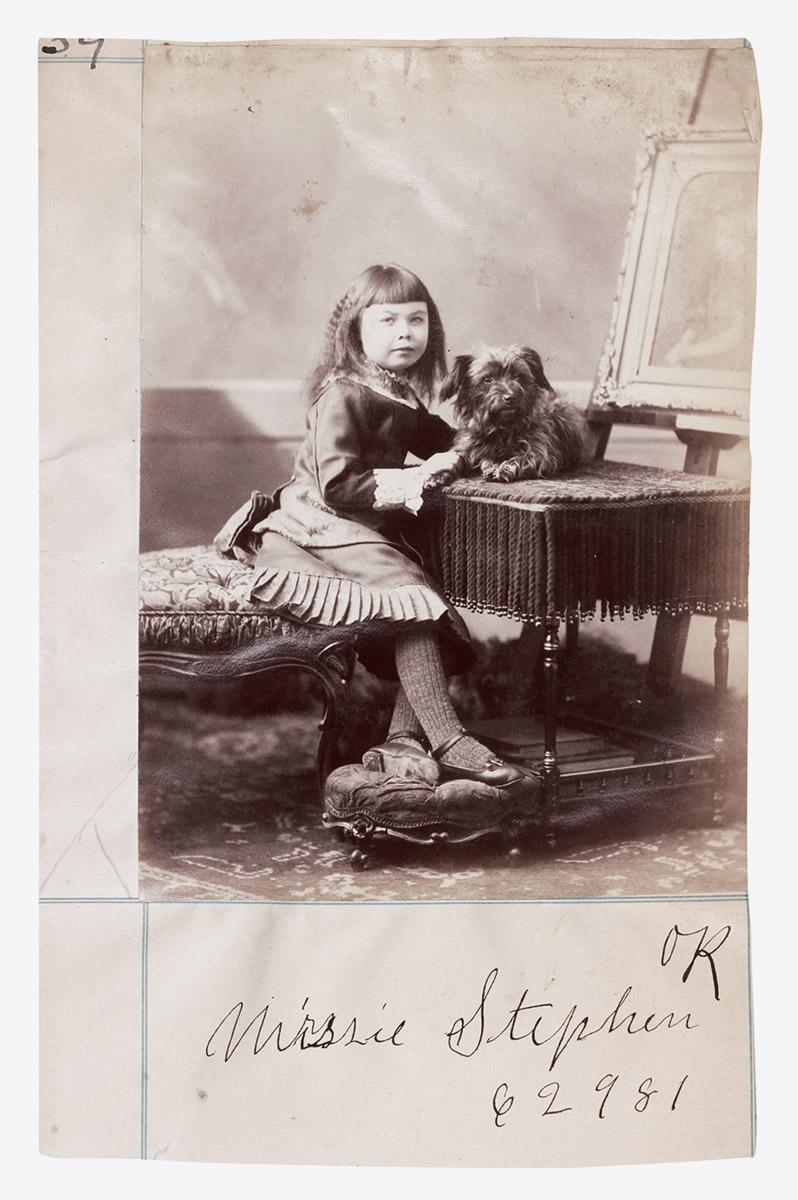Animal welfare in the photographic portrait of children in the nineteenth century
In the second half of the 19th century, with the emergence of animal welfare societies in the United States and Canada, visual culture became the vehicle for new discourses of benevolence towards animals. Illustrated periodicals (Our Dumb Animals, Humane Journal, etc.) published by these societies abounded with images of children caressing pets. More so than adults, children were ambassadors for the reforming ambitions of organisations dedicated to promoting animal welfare. The ethical precepts of this feelgood iconography percolated into photographic portraits of dogs, notably those by the Canadian William Notman. By exposing the mechanisms and limits of this visual pedagogy of solicitude, this article challenges the affective registers photography conjures up in its staging of interspecies relationships.

Notman & Sandham, Missie Stephen, Montréal, 1881, tirage argentique sur papier albuminé, 14 x 10,2 cm. Montréal, musée McCord (II-62981.1).
Vincent Lavoie is director of the Figura Centre for Research into Text and Imaginary (UQAM). He is a full professor in the Department of Art History at the Université du Québec à Montréal and has published La Preuve par l’image (Quebec: Presses de l’université du Québec, 2017) and L’Affaire Capa. Le procès d’une icône (Éditions Textuel, 2017), translated into Italian by Johan & Levi (Monza, 2019). His latest essay Trop mignon! Mythologies du cute (PUF, 2020) deals with minor aesthetics and, for example, the way digital animal images exacerbate them for emotional and pecuniary purposes.
Keywords: photographic portrait, dogs, animal studies, benevolence, animal protection societies, childhood
Citation: Vincent Lavoie, « L’image de compagnie. Le bien-être animal dans le portrait photographique d’enfant au XIXe siècle », Transbordeur. Photographie histoire société, no. 5, 2021, pp. 124-137.